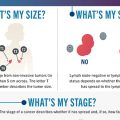
BPT
One out of eight women will get breast cancer in her lifetime. It’s a staggering statistic, but one made less ominous by the fact that finding breast cancer early makes it easier to treat or cure.
Thanks to technological advances in detection and new treatment approaches, women diagnosed with early-stage breast cancer have options. For instance, they can opt to keep their breast, with less invasive surgery and breast-conserving treatment (BCT). BCT focuses on removing only the tumor, allowing women to keep their healthy breast tissue.
Being aware of these choices can help women who are grappling with a breast cancer diagnosis resist the impulse to panic, and instead take a deep breath, press the proverbial pause button, and calmly create a plan of action.
Most women diagnosed with early-stage breast cancers choose to have BCT rather than mastectomy. In fact, the American Cancer Society estimates that 59 percent of women with an early breast cancer diagnosis (Stage 1 or 2) undergo breast-conserving surgery versus 36 percent of women who decide to have a total mastectomy.
Research has shown that breast-conserving surgery – typically a lumpectomy – followed by radiation therapy is as effective as a mastectomy in decreasing the risk of local cancer recurrence for most women.* Lumpectomy entails removal of just the tumor and surrounding tissue, while mastectomy necessitates removal of the entire breast.
The goal of breast-conserving surgery is to remove all detectable cancer cells. Precision in locating the tumor may increase the probability of complete cancer removal, which can help reduce the chances of needing a second surgery. Previously the process of pin-pointing the location of the tumor could only be done in an invasive manner with a wire inserted into the breast on the same day as surgery.
Today, breast conserving surgery is easier and less stressful for the patients with the wire-free SCOUT Radar Localization System, which uses safe, non-invasive, radar technology for precise guidance during the surgery. With this approach, a tiny, passive reflector about the size of a grain of rice is placed at the tumor site at any time prior to surgery. On the day of the surgery, the surgeon uses the system to activate the reflector, which enables the surgeon to precisely locate and remove the tumor.
If tumors are located accurately the first time, it is more likely that any additional treatments can occur faster. What’s more, the ability to strategically plan the incision may result in better cosmetic outcomes.**
Another benefit of this wire-free approach is that it helps decrease patient wait time on the day of surgery, making the experience less stressful for women and their families. “Surgeons tell us that their patients are impressed with the benefits offered by this technology, including shorter procedure times and decreased anxiety,” said Nicole Priest, MD, Chief Wellness Officer at Merit Medical, the company behind the system. “My entire career has been about helping people improve their health by making positive, impactful choices,” said Dr. Priest, “and that is exactly what women do when they know their treatment options and have breast conserving surgery at one of the 520 hospital systems across the country that have this system on board.”
There are other tumor localization systems, but none with the extensive track record of SCOUT. “Since it was introduced, SCOUT has been used in the treatment of close to 100,000 breast cancer patients,” said Dr. Priest. When surveyed, 97 percent of women said they would recommend the technology to other women.
SCOUT, as well as Merit’s brachytherapy system, SAVI Brachy, are pivotal parts of the paradigm that help women with an early breast cancer diagnosis. In addition to its role as a tumor localization tool, SCOUT is also used to tag lymph nodes and tumors prior to neoadjuvant therapy (chemotherapy administered prior to surgery); and SAVI Brachy delivers radiation directly to the lumpectomy site where the radiation is needed most, helping to spare surrounding healthy tissue.
* American Cancer Society. Cancer Treatment and Survivorship Facts & Figures, 2014-2015. Atlanta: American Cancer Society; 2014
** Cox C et al. A Prospective Single Arm, Multi-Site Clinical Evaluation of a Nonradioactive Surgical Guidance Technology for the Localization of Non-Palpable Breast Lesions during Excision. Ann Surg Oncol 2016 Oct;23(10):3168-74.

















Leave a Comment